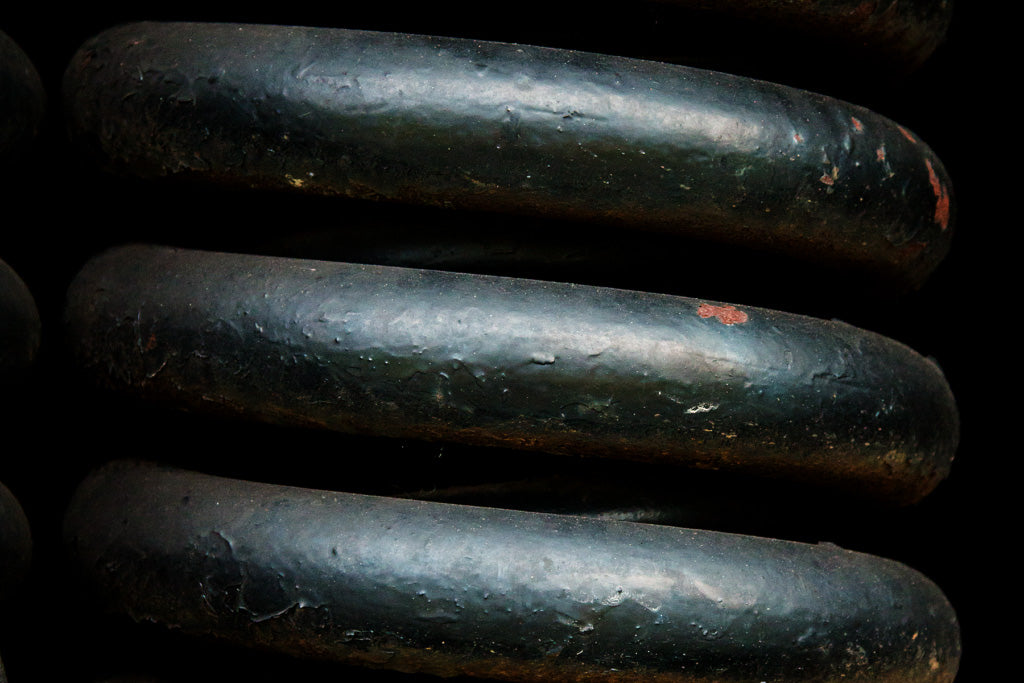
Progressive-Rate Coils Versus Linear-Rate Coil Springs
When building your truck or Jeep, there are a variety of suspension options to choose from. One of them that is seldom overlooked is what type of coil spring you’re going to get. Coil springs (aka helical springs) can be manufactured different ways, affecting the way they perform. There are two basic types that we refer to in the off-road world: linear rate (aka single-rate) springs and progressive rate (aka variable rate) coil springs. You can get variations of both from multiple manufacturers for almost any 4x4 out there, and the more you know about your purchasing choices ahead of time, the happier you’ll be with your suspension. So get ready for a quick crash course in coil springs!

Spring Rate
We should quickly explain the spring rate of a coil spring. The listed spring rate of a coil is the amount required to compress that spring by one inch. If you have a 300lb rated coil spring, it will take 300 pounds to compress the spring one inch. This spring rating is the same regardless of coil spring height or diameter—both of which can vary greatly depending on application.

Linear Rate Coil Springs
Linear springs are single-rate springs that do not change spring rate as they are compressed.
If you were dealing with a 350lb coil, it would take 350 pounds to compress that coil spring one inch (and 700 pounds to compress it two inches). The rate does not change as the coil spring compresses. They have the same spacing between the coil winds and the size of the coil wire remains the same.
The advantages of a linear coil spring? They will be your best choice for handling and load hauling performance. They will also give the most feedback to the driver and be the easiest to match (over progressive-rates) with a set of shocks.
The disadvantages? A coil spring with only a single rate will ride rougher down the road.

Progressive Rate Coil Springs
Progressive-rate coil springs are also called variable-rate coils springs, and have a spring rate that increases as the coil compresses from free length (unloaded). This style of spring is manufactured in an effort to soften the ride. A progressive-rate coil spring can be made a couple different ways that you can visually identify. The first is with a difference in the spacing between the coil winds—the stiffer rate has more spacing between the winds and the softer rate has less (spacing). A true progressive-rate coil will have minimal spacing between the coil winds at the top and the spacing will grow and grow the further down you go on the coil. The second way to make a progressive-rate coil is with a varying wire diameter. We more often see the variation of distance between the coil winds in the off-road world.
The advantage of a progressive-rate coil spring setup? Not only do progressive springs give a smoother ride over small bumps, but they also make the suspension stiffer more quickly as it compresses. They are ideal for a compromise between a spring stiff enough to do the work duty required and one soft enough to suck up the bumps of a rough road.

The disadvantage of a progressive-rate coil? They can be hard to match with a shock. Because the spring rate changes as the coil compresses, it can be tricky to get the valving just right in the shock to make a perfect package. They will also diminish vehicle handling over a single-rate coil spring.
It should be noted that many dual-rate coil springs are incorrectly labeled as “progressive rate” or “variable rate.” In fact, more often than not, we tend to use dual-rate coil springs than true progressive-rate coil springs in the off-road world. A dual-rate coil spring can be spotted by two starkly different spacings in the coil winds on the same spring, with a rate transition range in between. These are often easier to setup up on trucks and correctly valve the shocks to match, but do not have a exponentially growing spring rate as the coil spring compresses.

Lift Height
Pay attention to the spring rate when purchasing lift springs. Think about this: A 2” lift coil could have a shorter free length (uncompressed length) than your factory coil springs but have a stiffer spring rate that still gives your vehicle 2 inches of lift. Or you could have a longer coil spring with a softer spring rate that give your vehicle 2 inches of lift. Generally, most lift coils will have a longer free length than a stock coil, but the additional length can vary depending on the spring rate of the coil springs. Wherever you’re at in the process, give us a call or shoot us an email, and our helpful to team will be happy to help you make decisions and advise you along the way.
